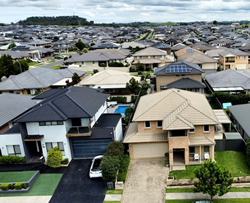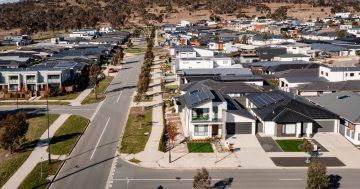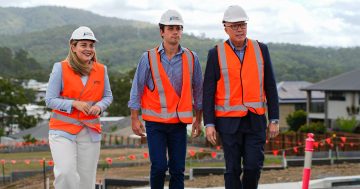Poppy Johnston* explains how Labor’s ‘Help to Buy’ scheme works.
 If you are one of many Aussies hoping to make it onto the property ladder, then you may be wondering if you are eligible for the newly elected Labor Government’s ‘Help to Buy’ scheme.
If you are one of many Aussies hoping to make it onto the property ladder, then you may be wondering if you are eligible for the newly elected Labor Government’s ‘Help to Buy’ scheme.
The scheme, introduced by Labor during the federal election campaign, would likely be an attractive proposition for a variety of buyers.
And, with several experts expecting the scheme to become oversubscribed quickly, you’ll want to move fast to avoid missing out.
How it works
Under the scheme, the Government plans to chip in up to 30 per cent of the purchase price for existing properties and up to 40 per cent for new builds for eligible households.
The scheme will be available to people earning less than $90,000 a year – $120,000 for couples – and will be capped at 10,000 places a year.
There will also be dwelling price caps that differ according to location.
Buyers will need to source the rest of the finance from a normal lender and will only need a 2 per cent deposit to do so.
Households will not be required to pay rent on the stake of the home held by the Government.
When will it start
The scheme is expected to start in July 2022.
Who is it suitable for?
The Grattan Institute’s Brendan Coates, who authored a report recommending such a scheme earlier this year, said a federal government co-ownership program would be best-suited to older buyers who had perhaps lost their home due to a marriage breakup, and risked renting into their retirement.
For these buyers, the biggest concern is paying off a mortgage before they retire, making a shared-equity scheme – which reduces the amount they have to pay off because the Government is acting as a silent partner – quite attractive.
For younger first home buyers, whose biggest barrier is the deposit, Coates said the Home Guarantee Scheme, introduced under the Coalition but set to continue under Labor, would be more suitable.
Catherine Mapusua from lending and payments provider WLTH also said the Help to Buy scheme would be attractive for older people who might be concerned about “missing the boat” on a mortgage when they were younger.
“This would provide them with the stability of paying off an asset rather than paying rent in the rising rental climate,” Mapusua said.
She also said the Help to Buy scheme would be attractive for younger people trying to purchase their first home, because the 2 per cent deposit would be beneficial since it bypassed the need for years of saving to get into a property.
She said this might make it more attractive than the Home Guarantee Scheme, which required a 5 per cent deposit.
Are there any risks associated with this scheme?
CoreLogic research director Tim Lawless said buying with a small deposit could be risky.
“With the housing market probably heading into a downturn over the coming year or years, some buyers may find their home is worth less than the debt held against it,” Lawless said.
“It’s important to know if the Government will share in the downside risk if the property is sold while in a negative-equity situation.”
The WA government’s home equity scheme, the KeyStart Loans program, has illustrated what can happen when markets start to decline, with the number of loans in arrears and default increasing between 2017-2019 in line with the broader WA market downturn.
Will it make house prices go up?
Independent economist Saul Eslake said all schemes allowing people to pay more for housing than they otherwise would exerted upward pressure on prices.
However, he said because the scheme was capped at 10,000 a year, amounting to 10 per cent of the number of first time buyers in a typical year, the inflationary impact of the policy would be “fairly small”.
He also said the income test and property cap would help limit the impact on prices.
Mapusua expected to see increased demand in lower- and middle-priced outer suburbs.
“This would be reflected in rising house prices in these locations,” Mapusa said.
“Potential buyers need to get in quick to avoid missing out on a property that may tip over the pricing caps set in place.”
Will it stop people moving house?
Mapusua said the scheme would diminish a person’s ability to move house as their ability to re-purchase a home would be limited.
“It is also a complicated transaction to navigate with the fact that the sale proceeds and capital gains need to be split due to the equity shares, I feel this will deter people due to lack of education around how this would look,” Mapusua said.
Eslake agreed it was possible the scheme would stop people moving if they were reluctant to “share” part of the capital gain with the Government.
“But that means they may be ‘stuck’ in a home which no longer suits them, so it wouldn’t be a ‘costless’ choice,” Eslake said.
Will the Government own my home forever?
Under the scheme, people would be able to purchase back the equity share held by the Government.
In fact, if their income exceeds the annual income threshold for two consecutive years, they will be required to repay the Government’s financial contribution in part or whole, as their circumstances permit.
*Poppy Johnston is a journalist at Yahoo Finance Australia covering personal finance, property, careers, investing and economics. She can be contacted at [email protected]
This article first appeared at au.finance.yahoo.com.










